
How Diwali Fireworks Blow Air Pollution Numbers Through The Roof, Explained In Charts
Festive cheer can have its downside. As Diwali approaches, pollution levels in Indian cities start to rise sharply, due to the burning of crackers. While all cities are affected, among the largest tier-I cities, it is Delhi and its surrounding regions that stand out in terms of the extent to which pollution spikes.
This year was no different, as air pollution levels surged. The after-effects are likely to persist, as pollutants remain in the air and dissipate slowly. The bigger problem for Delhi, in fact, a large swathe of North India, is that pollution spikes after Diwali and persists through the winter months.
Courting disasterThis year's Diwali was different for the Delhi National Capital Region (NCR) as the Supreme Court allowed the use of 'green crackers ', effectively reversing the full ban it had upheld in 2020. It allowed crackers to be burnt during 6-7 am and 8-10 pm on 19 October and 20 October.
The evening slot was punishing on both those days, as well as on 21 October, even though crackers were disallowed.
Also Read | Tackling air pollution is an economic imperative, not just a health cri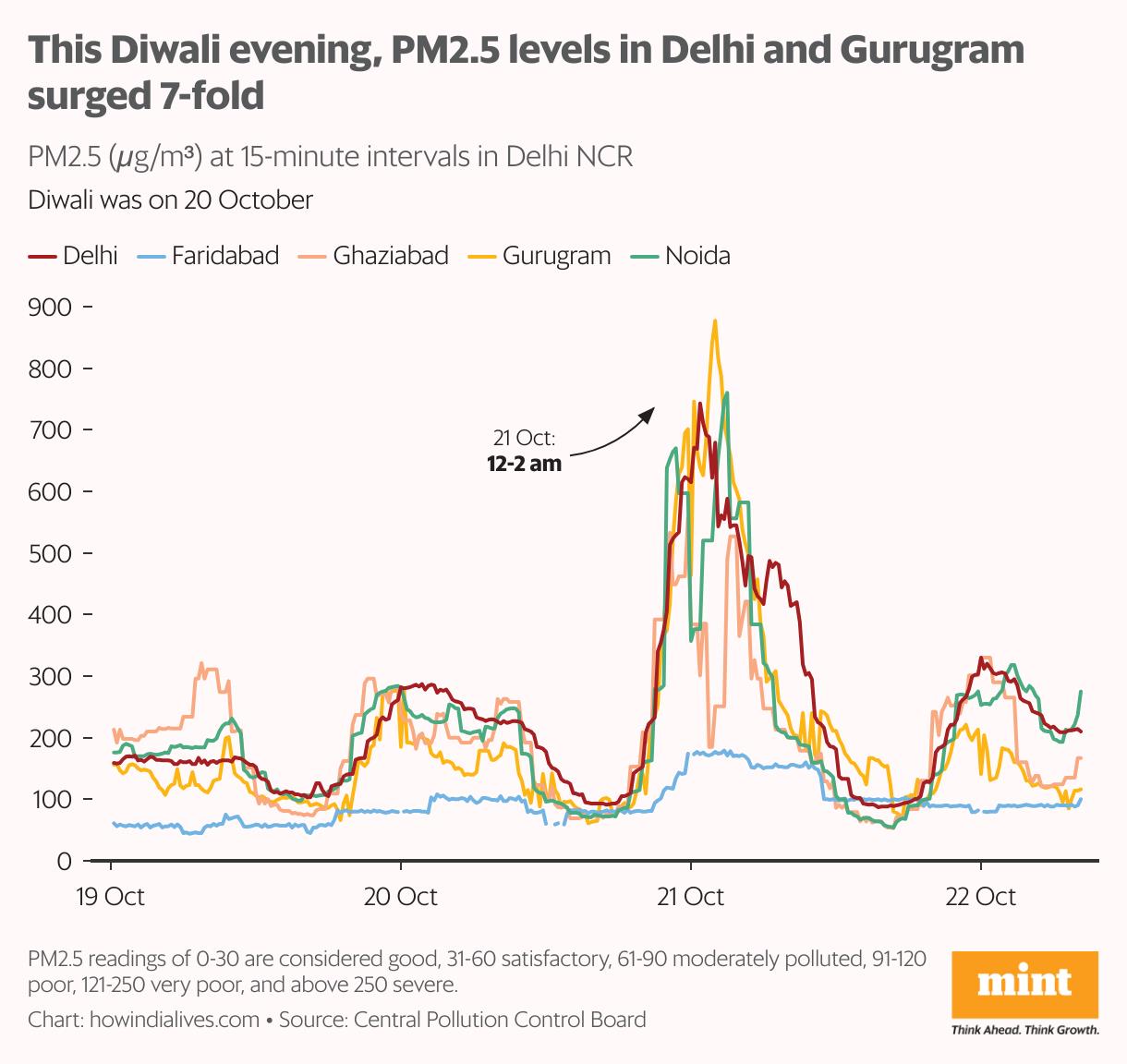
Air pollution levels soared across Delhi NCR in the evenings, as shown by a plotting of PM2.5 data, a key pollutant, at 15-minute intervals. As expected, PM2.5 levels started to rise sharply in the evening, around 5.30 PM, and did not begin to subside till the early hours of the following morning.
What's staggering is the sheer scale of the increase in pollution: a 7-fold increase on Diwali day between 6.30 PM and 12.45 AM in both Delhi and Gurugram. In other Delhi NCR cities, it was 2-4 times, and in toxic territory.
Also Read | Why do we remain in the dark about the harmful effects of light polluti Hanging in the airIf data for 2024 is anything to go by, the toxic air is likely to linger in the aftermath of the Diwali burst, not just in Delhi NCR but also in other leading Indian cities. The air quality index (AQI) is a single value intended to show a composite picture of air quality across multiple pollutants.
We looked at AQI data for four leading Indian cities in the 10 days preceding Diwali and 10 days after it. (Diwali that year was on 31 October).
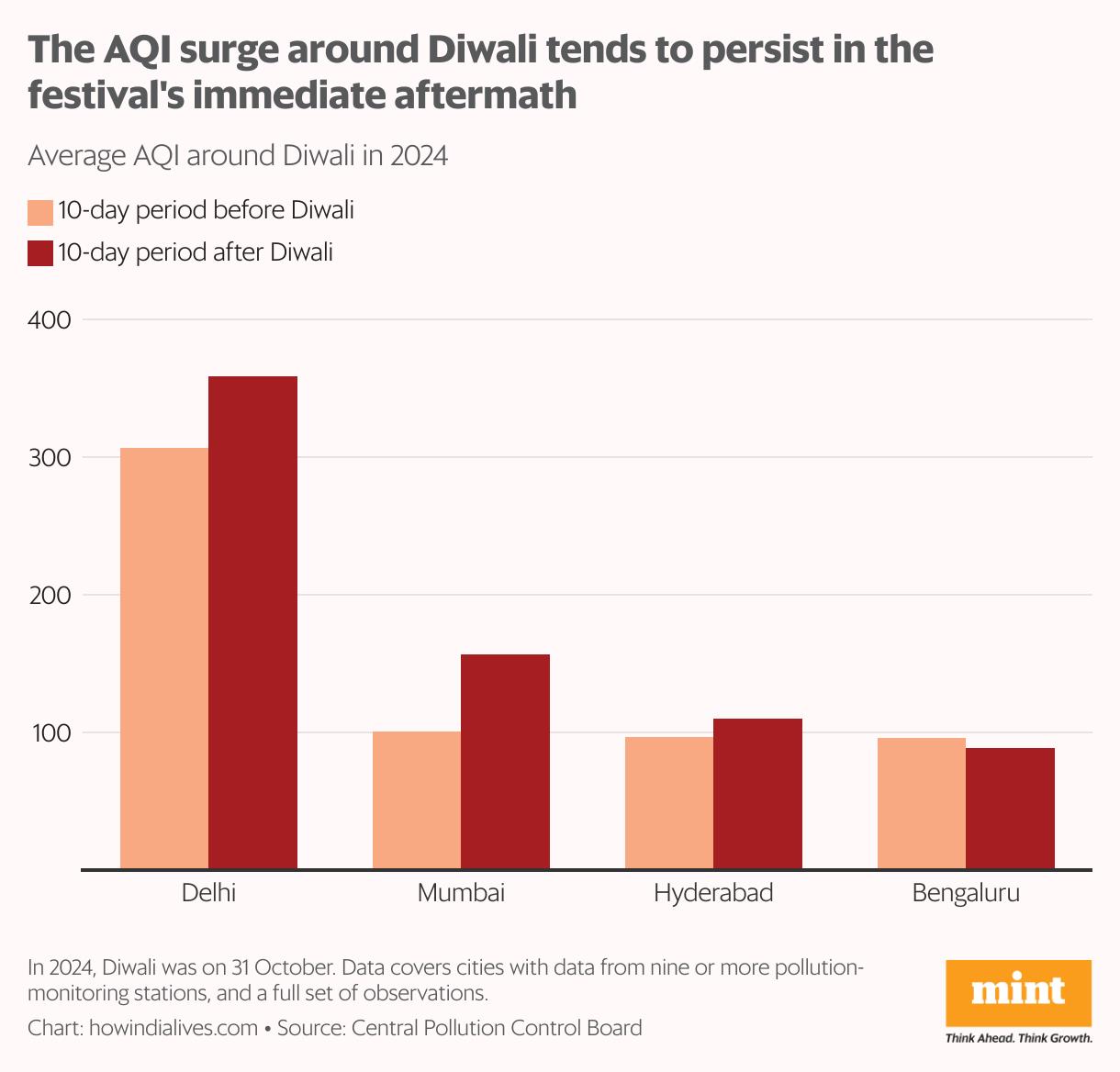
What's striking is that even after Diwali, AQI in large cities stays high, as pollutants persist in the atmosphere. Among these four cities, the average AQI in the 10 days following Diwali in 2024 fell only in Bengaluru, compared with the 10-day pre-Diwali run.
By comparison, it was about 17% higher for Delhi and a whopping 55% for Mumbai. But in absolute terms, there is no comparison-Delhi's pollution levels were way above other cities, and remained in the 'very poor' classification throughout this period.
Fine marginsThis is true not just of composite AQI. It's also true for one of its significant sub-components: PM2.5, which are fine particles of dust, soot or smoke suspended in the air that are around 2.5 micrometers in size, or about 30 times finer than human hair.
Particulate matter is hazardous because it is easily inhaled and can enter the lungs, as well as the bloodstream.
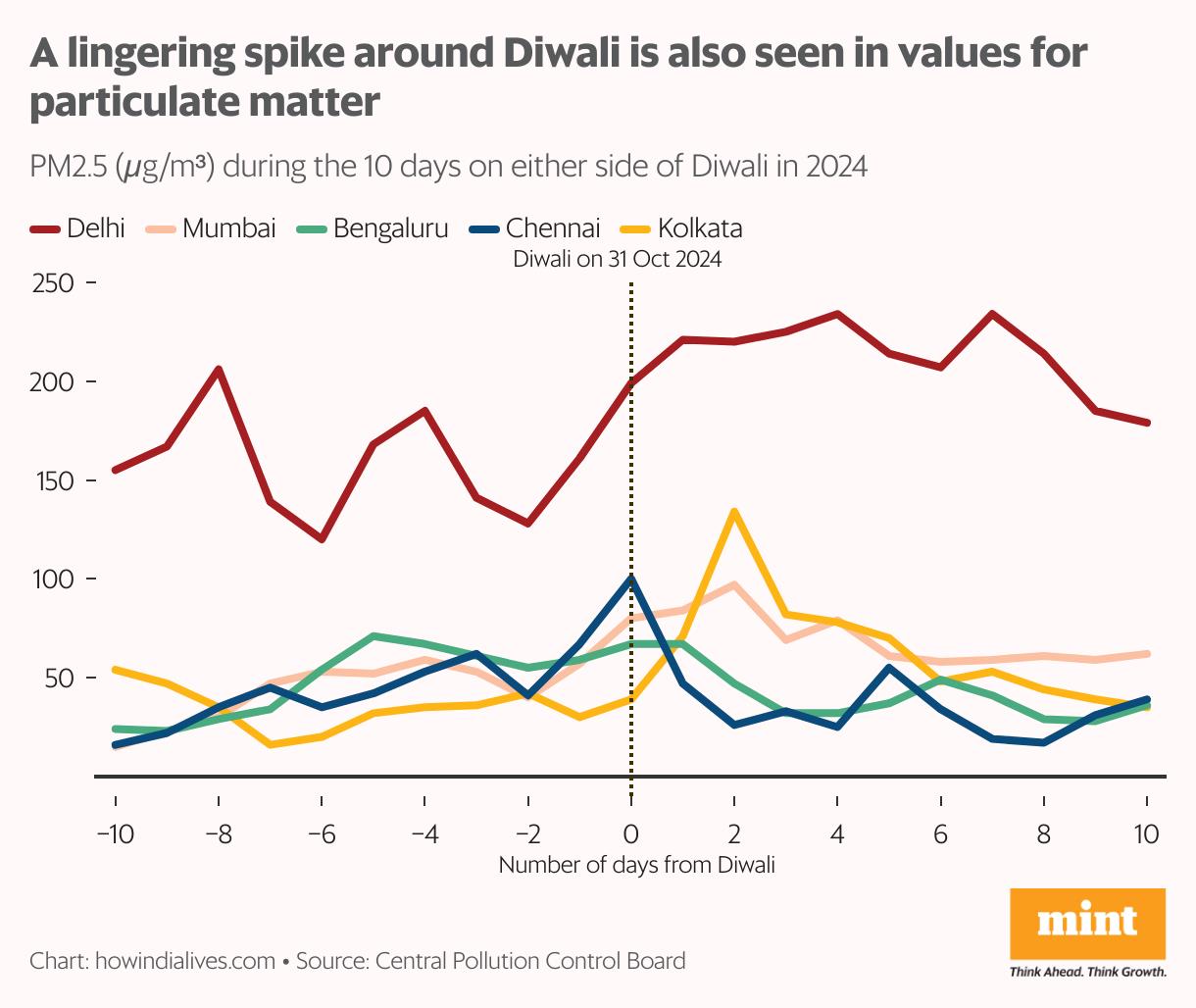
Similar to the overall AQI, PM2.5 spikes sharply beginning two to three days before Diwali. But unlike AQI, it does subside, except in Delhi. At its peak, Delhi's PM2.5 levels are about 1.7-3.3 times the peak of the other four cities studied here.
In a study of PM2.5 in North India published in the journal Nature Communications in 2024, authors Deepika Bhattu and others found that“ammonium chloride and organic aerosols, from traffic exhaust, residential heating, and oxidation of unsaturated vapours from fossil fuels are the dominant PM sources inside Delhi."
Also Read | Lung cancer risk: Air pollution is injurious to never-smokers' hea Winter dreadIn Delhi this year, while all pollutants showed a rise, it was especially pronounced for PM2.5 and PM10 (particulate matter that is around 10 micrometers in size). But for Delhi and its environs, the worst is yet to come.
After Diwali comes the crop burning season in North India, when farmers burn the agricultural residue in their fields to prepare for a new planting season. The resultant smoke adds to the air pollution in the region.
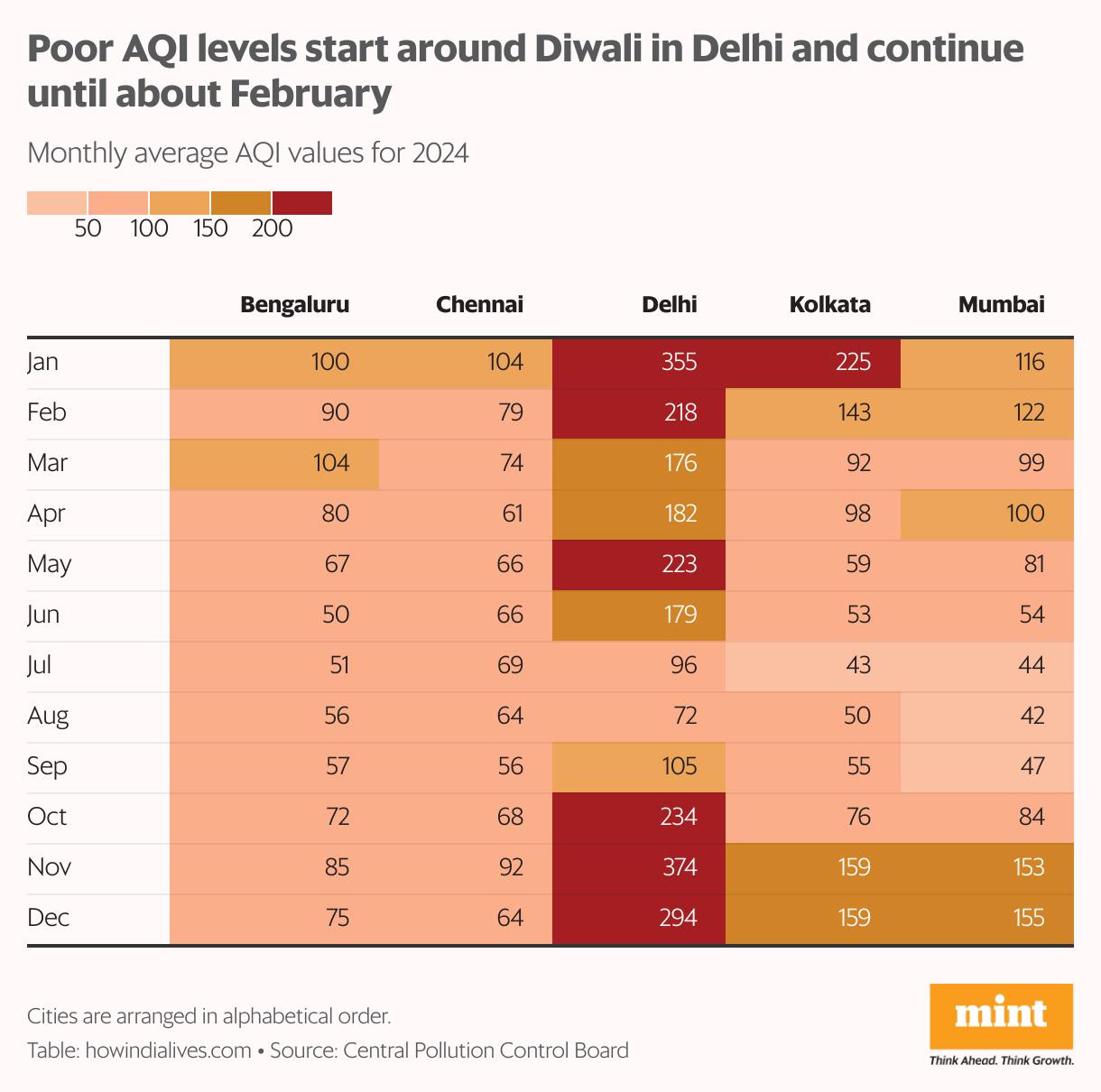
While this is an important factor that contributes to pollution in November, air pollution levels in Delhi NCR remain high across all winter months-long after crop burning has ended.
The air quality starts to improve only in February. In other words, crop burning is one of the several factors contributing to winter pollution levels in Delhi NCR. This kind of pollution is a major cause of respiratory diseases, especially asthma. And this year seems no different.
is a database and search engine for public data
Legal Disclaimer:
MENAFN provides the
information “as is” without warranty of any kind. We do not accept
any responsibility or liability for the accuracy, content, images,
videos, licenses, completeness, legality, or reliability of the information
contained in this article. If you have any complaints or copyright
issues related to this article, kindly contact the provider above.

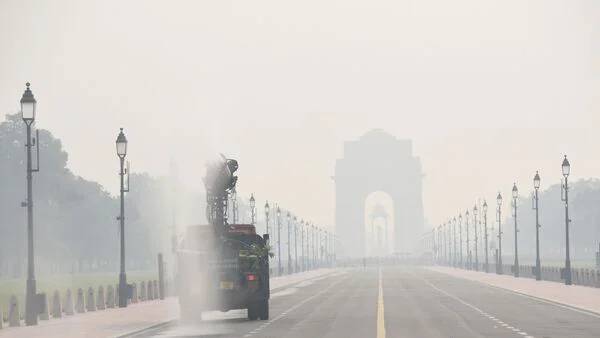














Comments
No comment